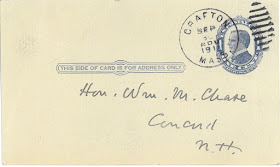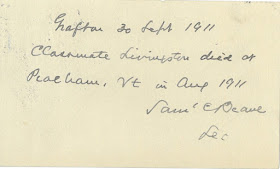The German copyright for
Mein Kampf (My Struggle), Adolf Hitler's autobiography and master plan, has finally expired, and German scholars have just released a critical edition. But we have a copy that turned Hitler's propaganda back on itself: an unauthorized, war-time translation for a wary British public fretting over German expansion to the East. It is part of our current exhibition
Light and Shadow in the Thirties.
In the early 1930s, Hitler refused to authorize an unexpurgated translation, allowing only a few positive abridgments. As Hitler's policies escalated with the annexation of Austria and the invasion of Czechoslovakia, English-speaking audiences demanded a full translation. The publication history is long and complicated -- there was a lawsuit, threats, and, for translator James Murphy, a narrow escape from Nazi Germany.
Rauner has James Murphy's translation, issued by the London firm Hurst & Blackett in eighteen parts. Our copy was probably published during World War II. Each cover boasts that the proceeds will benefit the British Red Cross -- not Hitler's German publishing house Eher Verlag.
Mein Kampf became a bestseller in English, even after the war's outbreak, as Britains sought to understand their enemy's convoluted and hate-filled ideology.
The pamphlets use Hitler's face on every cover and stock photos of German sites fill the interior pages, showing how cheap and popular books depended on photography to increase their intellectual and cultural cache. "Illustrated" was just another selling point, just like the "Binding Cases" advertised on the back cover.
For Rauner's
Mein Kampf in parts
, see
Rare Book DD247.H5 A326 1939, currently on display in the Class of 1965 Galleries
. The exhibition comes down on April 3, 2016, as we install an exhibition by the first year seminar Anthropology 7: Values of Medicine.
To learn more about the publication history, check out James J. Barnes and Patience P. Barnes'
Hitler's Mein Kampf in Britain and America: A Publishing History, 1930-39 (
Baker Berry DD247.H5 A3426).
 Most of the time we work with old things here in Rauner. Sometimes it can get a little eerie, because the people who made so many of our books and documents are no longer with us, and, as one astute archivist once said, "their papers really are their last remains." We are pretty hardened to it, but the tales of woe and death sometimes get to us.
Most of the time we work with old things here in Rauner. Sometimes it can get a little eerie, because the people who made so many of our books and documents are no longer with us, and, as one astute archivist once said, "their papers really are their last remains." We are pretty hardened to it, but the tales of woe and death sometimes get to us. This week we opened up an envelope stuffed with postcards from the early 1900s. All of the cards were written to William M. Chase, Class of 1858 and College Trustee, from Samuel C. Beale, Secretary to the Class of 1858. Each card simply records the death of another classmate. Most are terse:
This week we opened up an envelope stuffed with postcards from the early 1900s. All of the cards were written to William M. Chase, Class of 1858 and College Trustee, from Samuel C. Beale, Secretary to the Class of 1858. Each card simply records the death of another classmate. Most are terse:
